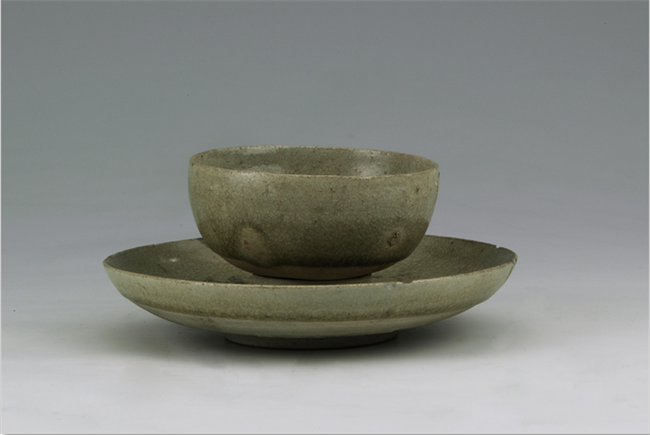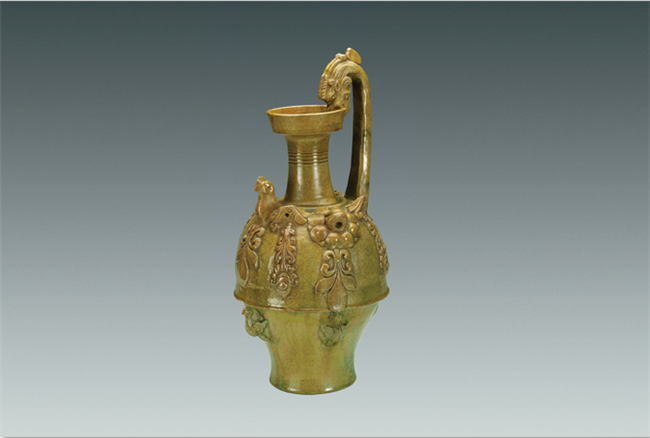Porcelain
Born of the earth and fire, porcelain is one of the greatest inventions of China. Collections at Shanxi Museum are mostly items from the northern part of China in ancient times, especially the Northern Dynasty (386-581) and the Sui (581-618) and Tang (618-907) dynasties. But the most prominent collection belongs to the Song (960-1279) and Yuan (1271-1368) dynasties, when production was widespread in the country, varieties were rich and quality was high. The styles of porcelain products during the Song and Yuan are elegant, delicate and tasteful. The decorations feature realistic and vivid paintings, engravings or calligraphy. During the Yuan Dynasty, Jingdezhen in Jiangxi province replaced the production sites in North China to become a hub of the industry, pushing porcelain art to a new historic height.

Green-glazed bowl and bracket, Northern Dynasty
With a total height of 6.7 cm, the bowl has upper and lower diameters of 9.1 cm and 3.3 cm and the bracket has upper and lower diameters of 15.3 cm and 6.4 cm. The porcelain set was unearthed in Dongtaibao village in the suburbs of Taiyuan. The set features an introverted bowl mouth, an arch-shaped bowl wall, a small bowl foundation, and a concaved bracket with low foundation. Fine glaze was applied to the lower parts of both the bowl and the bracket. Uneven cracks can be found on both items.

Greenish yellow-glazed flagon with dragon-shaped handle and cock-head decoration, Northern Qi Dynasty (550-577)
Height: 48.2 cm
Unearthed in 1981 from a Northern Qi Dynasty tomb in Taiyuan, the item features a dragon with its mouth connected to the flagon's mouth and its neck connected to the flagon's body. Opposite the dragon is a cock's head. The flagon is also decorated with patterns of lotus flowers, honeysuckles and four phoenix birds spreading their wings. The entire flagon is glazed in a greenish-yellow color. Ice-crack patterns can be found on the surface.



